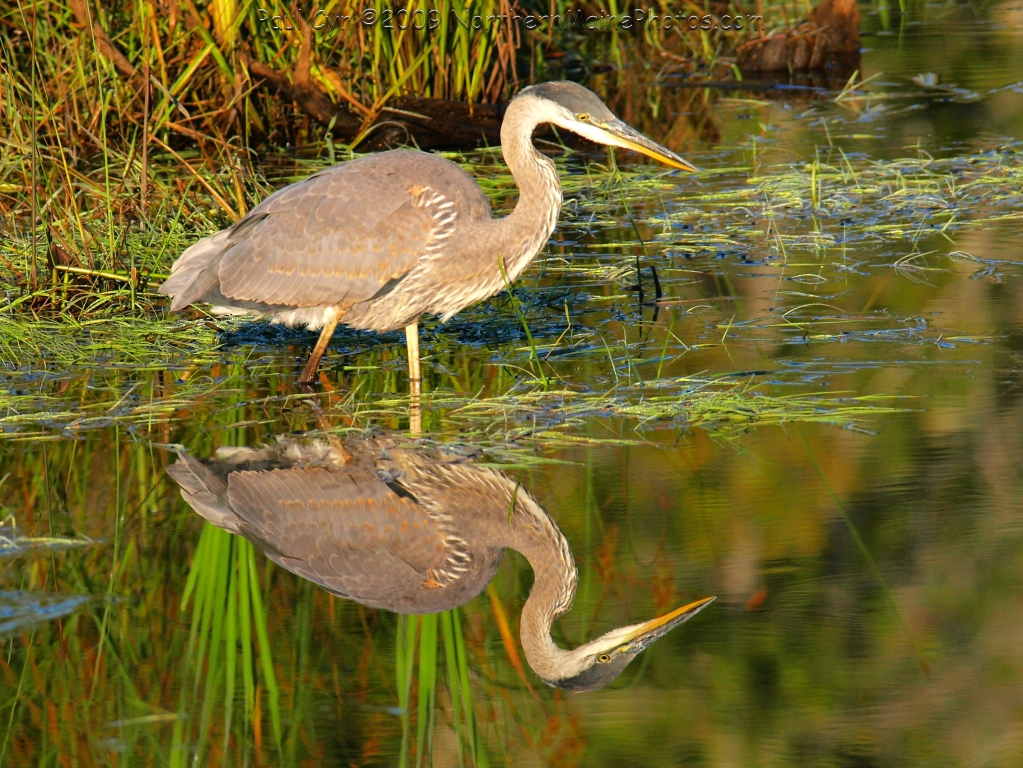Maine Heron Observation Network
Despite Unsettled Spring Weather, Herons Return and Settle in at Their Colonies
Great blue heron landing in a pine tree.
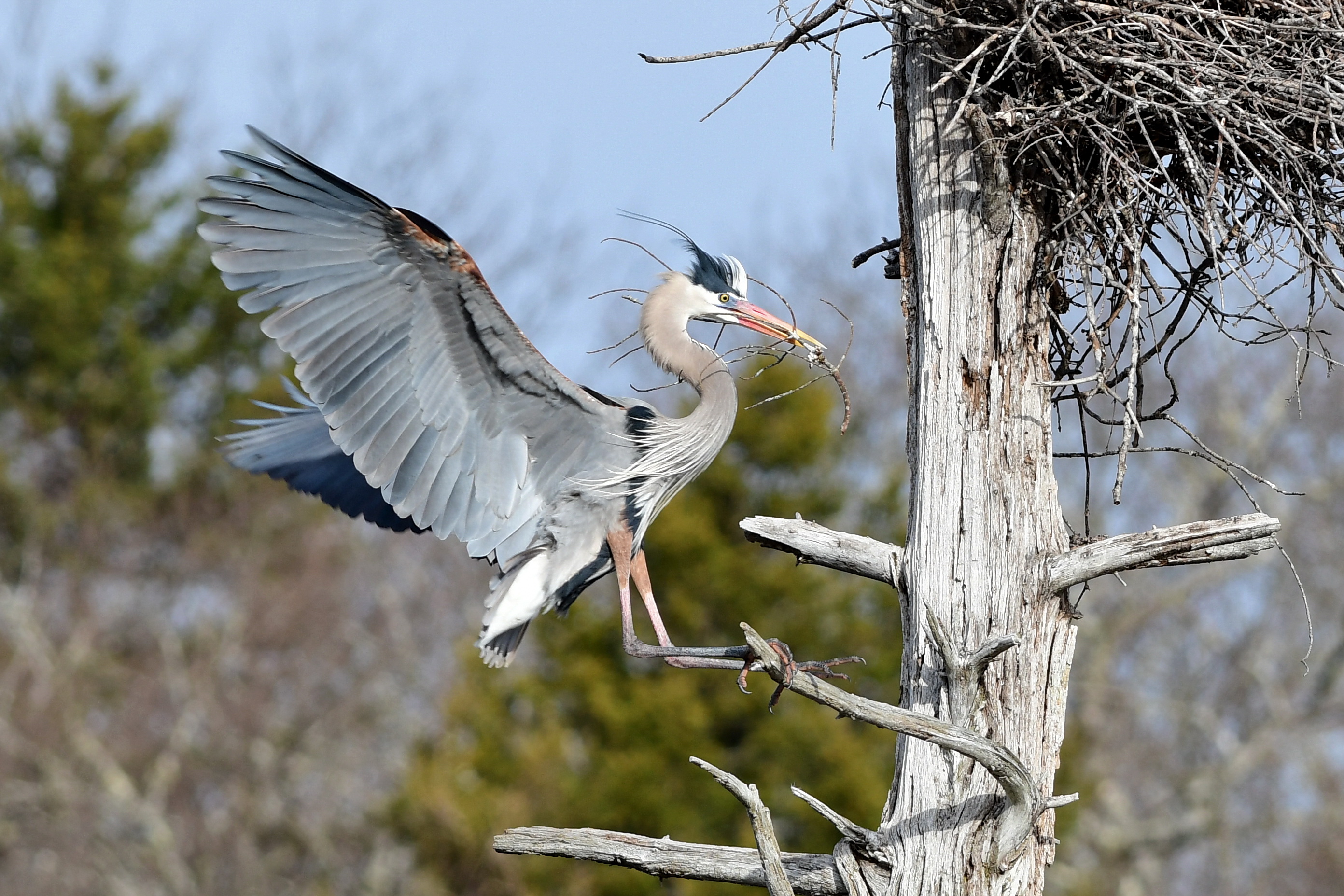
Excitement is Building as the Heron Observation Network Enters Year 15!
Our 2022 results show a slight increase in the number of nesting pairs of great blue herons in Maine, the first time since 2015. We are gearing up for our 15th year of monitoring heron colonies with the help of so many AMAZING volunteers. We will also be conducting an aerial survey to bolster our numbers and hopefully find some new colonies. Spring is coming!
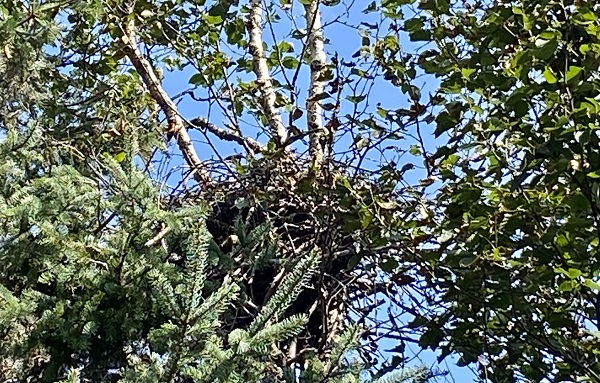
Assessing Heron Nesting Activity in Fall: No Herons? No Problem!
We visited the island where our GPS-tagged great blue heron, Mariner, nested this past summer. Even without any herons still using the nests, we used other clues to determine which nests were active.
Deer Isle Mariner is Latest GPS-Tagged Great Blue Heron
Meet “Mariner,” the newly GPS-tagged great blue heron from Deer Isle. On June 3rd, Mariner became the 11th great blue heron in Maine to be added to the Heron Tracking Project that began in 2016.
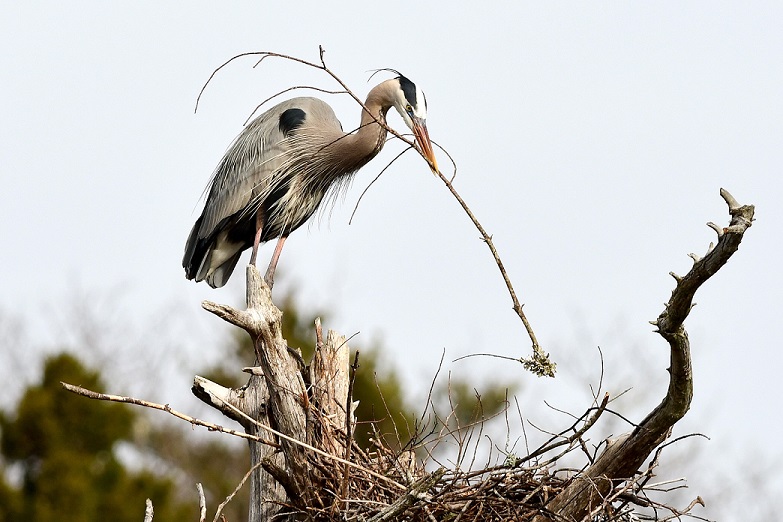
Ring in the Spring with the Heron Observation Network – 13 Years and Counting
Of the many harbingers of spring, herons returning to their colonies is my favorite! Before we embark on the 14th year of heron colony monitoring, let's first review results from the 2021 volunteer efforts.
Spring is Here, but Where are Our Tagged Herons?
Spring is here, and we are patiently waiting for our tagged herons to return from their wintering areas. Here's an update explaining why we haven't seen them yet.
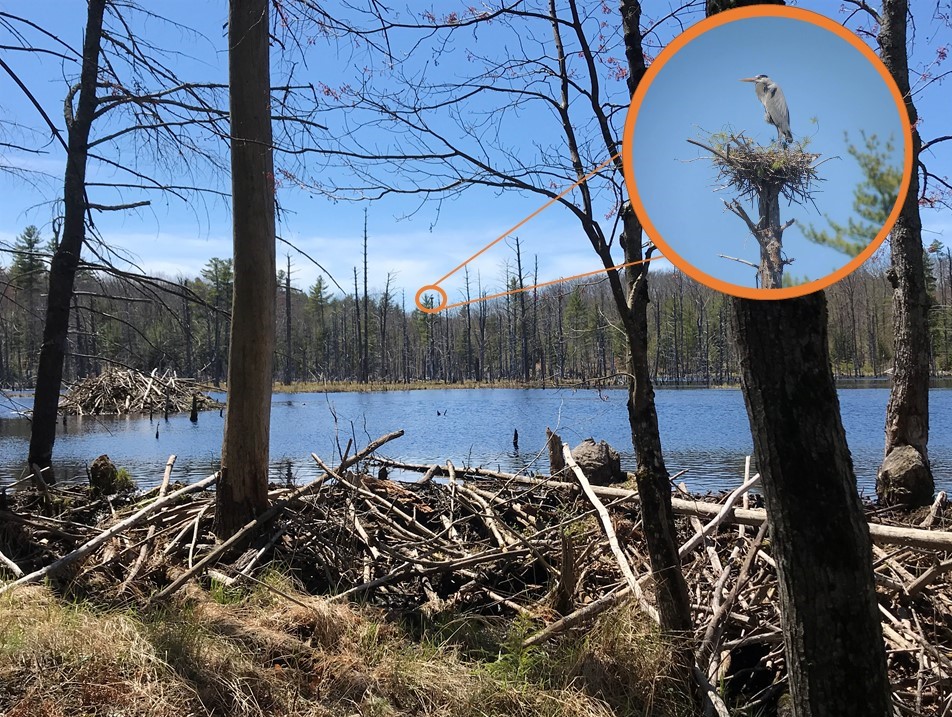
Beaver Flowage Attracts GPS-Tagged Heron to Nest
Have you heard of Cornelia, an adult female great blue heron tagged with a GPS transmitter, who nests in Maine and migrates to the Bahamas for the winter? She is one of ten other herons who’ve been equipped with GPS transmitters by Maine Department of Inland Fisheries and Wildlife (MDIFW) to learn more about heron movements, habits, and habitats in Maine and beyond. The project began with the help of a Maine Outdoor Heritage Fund grant and many partnering schools, and is part of MDIFW’s ongoing efforts to understand the status of great blue herons in the state – especially along the coast where their population has declined by 89% since the 1980s.
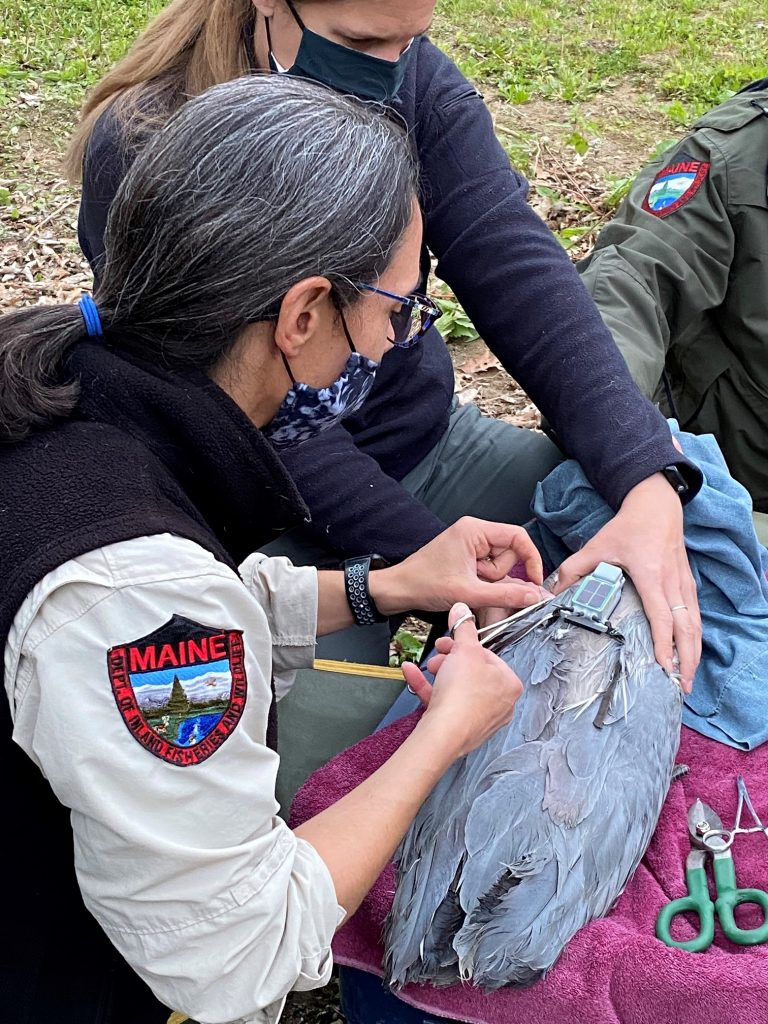
First Maine Island-Nesting Heron Tagged with GPS Transmitter
IFW technician Brittany Currier holds tagged great blue heron just before release. To ensure everyone’s safety, IFW biologist Amanda Cross holds onto the bill.
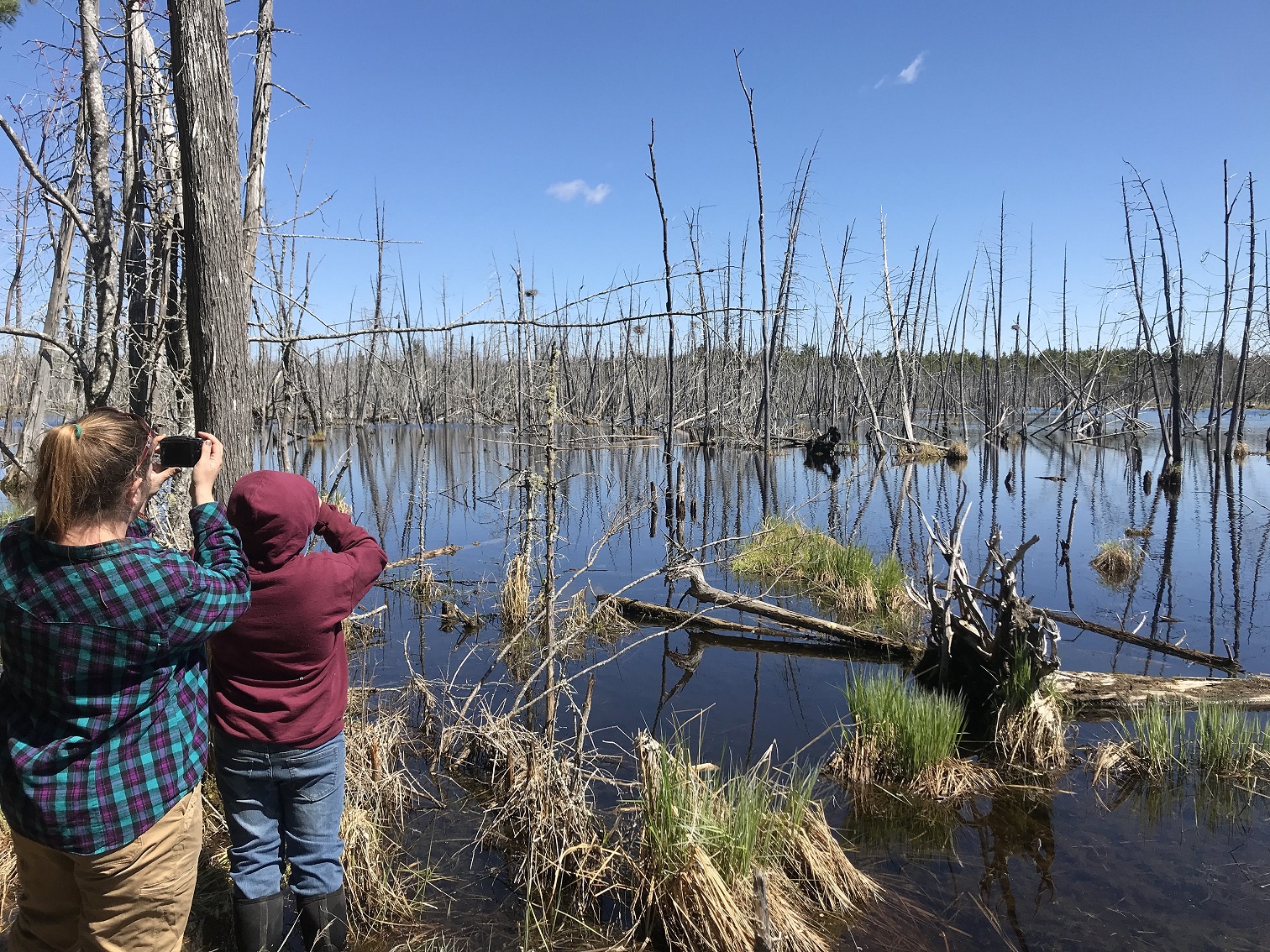
Heron Observation Network Volunteers Didn’t Skip a Beat in 2020
Despite the many challenges that 2020 placed on the world, the Heron Observation Network’s volunteers didn’t skip a beat. Thankfully, outside is the safest place to be during the pandemic, and thus our usual heron colony monitoring efforts carried on in a similar fashion as in past years. For the twelfth year in a row, volunteers trekked to great blue heron colonies in all corners of the state to collect nesting data that is providing a clearer picture of the population’s status. Sixty-eight volunteers and staff monitored 112 great blue heron colonies.
Keep In Touch!
Enter your email or mobile number to receive the latest news from MDIFW.
